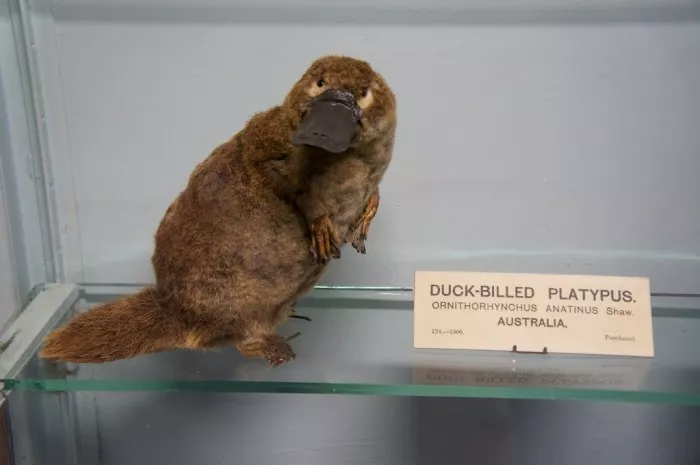Recently, KFC's reachable duck music box is out of the circle. Many netizens even spend a lot of money to buy this toy in order to get reachable duck It is reported that reachable duck is a character in the animation "Baoke dream". One of the earliest handheld game series "Baoke dream" released by Nintendo, Japan, appeared in the first generation game "Baoke dream: Red / green".

The cute shape of Da Da duck is loved by many people. In fact, its prototype is a mammal that can lay eggs - platypus**
According to the science and technology daily, different kinds of platypus have different sizes. The large platypus mainly lives in Tasmania, Australia, while the smaller ones live in Queensland**
The weight of adult platypus ranges from less than 1kg to 3kg, and its body length is 30 ~ 40cm, of which the length of its tail accounts for 10 ~ 15cm. Males are about 1 / 3 larger than females.
Platypus subverts people's impression of mammals. It has many "magical" features: although platypus has a duck like mouth, it has no teeth in its mouth**

When eating, the platypus will swallow the gravel and food together and huff and puff back and forth in the water, so as to grind the food and then swallow it into the stomach.
Although platypus is a mammal, it can also lay eggs and reproduce However, their eggs are different from the hard shell eggs produced by birds. They are often only 1cm in diameter and soft shell.
At the same time, the main source of nutrition for platypus cubs is milk. However, platypus has no lactation organs. Its lactation glands are on both sides of the abdomen. The cubs eat milk by licking their mother's abdomen.
In addition, platypus has a feature that is rare in mammals and common in reptiles* Male platypus has a spike on its hind foot that secretes venom *. Platypus will use this venom to defeat its competitors in courtship.
However, at present, the population of platypus is not large and only inhabits in some parts of Australia. the International Union for conservation of nature has listed platypus as an endangered species in recent years**
Scientists predict that the number of platypus will drop by 73% by 2070. Scientists believe that protection measures are urgently needed to minimize the risk of extinction